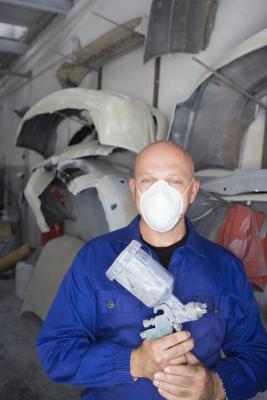
You have sanded, prepped, and primed your car. You are spraying on the paint. All is well. The paint is flowing, nice and smooth. No runs, no sags, no errors. Then, for apparently no reason, a crater forms in your beautiful surface. It sort of looks like a fish eye, and that’s what it is known as: the dreaded fish-eye. Where do they come from and what is their purpose? To ruin your day. Can they be stopped? Yes.
A fish-eye is a defect in the paint that occurs when paint refuses to stick to the surface and flows away from a contaminant either on the surface being painted or in the paint itself.
The most common cause of fish-eyes is improper surface preparation. The surface must be absolutely clean, especially of old wax or silicone-based polishing agents from the underlying surface. Prior to painting, the surface must be thoroughly cleaned with a proper wax and grease remover, and you cannot allow it to dry on the surface because it will leave a film of wax and grease. Use plenty of clean rags and clean it twice. When wet-sanding, give the surface plenty of time to dry. Oil from an air sander or your hands can contaminate the surface.
The most common contaminant to come through with the paint is water from condensation in the air compressor. Use a water trap between the compressor and the air line. Drain the compressor every day.
If your car was painted at a shop and you find fish-eyes, take it back and demand a new paint job. Do not try to fix it yourself with sandpaper or rubbing compound. If you are painting the car yourself, there are two options. You may let the paint dry, color sand it with 400-grit sandpaper and repaint. This is not the preferred method because chances are you will not get rid of the contaminant. The better method is to remove the paint with lacquer thinner and repaint.
If all else fails, there are fish-eye additives that can be added to the paint. If you do use an additive, it must be added to all of the subsequent finishes. For instance, if you are spraying a base coat and are going to spray a clear coat, you must use the additive in the clear coat, too.